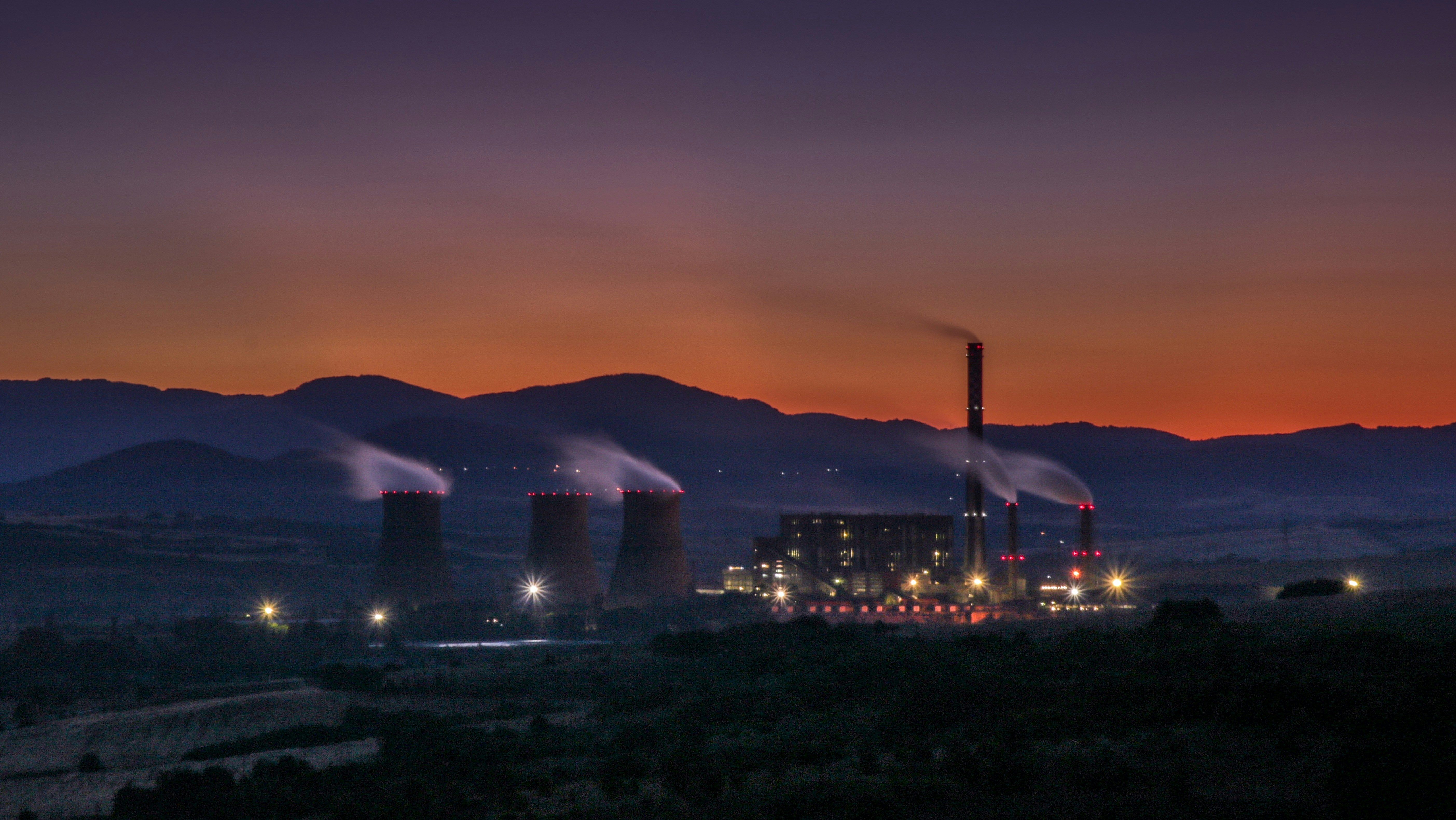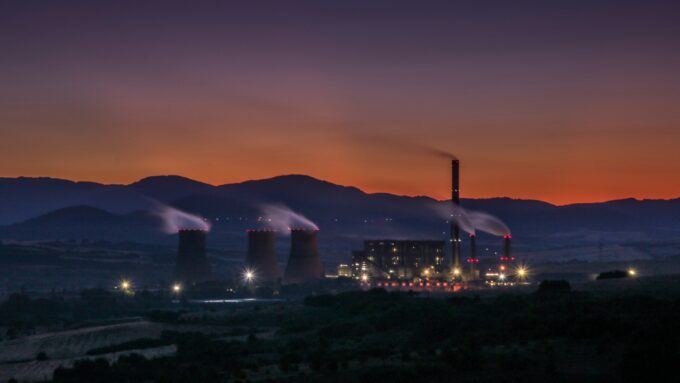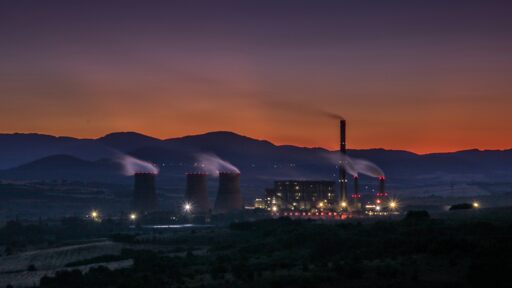

Image by Viktor Kiryanov.
Climate change has a new partner in its quest to alter life as we know it: Nuclear, the power buzzword for the AI Holy Grail of human submission to digital electrons mimicking human brainpower. And AI can’t survive, can’t thrive without enormous amounts of electrical energy. Wall Street has the answer and politicians agree that nuclear is the big, beautiful answer to a whole new advanced level of human mental experience with electrons. The nuclear narrative is more positive than ever, “go for it,” but what if something goes wrong or is nuclear suddenly risks-free?
Knowledgeable people are holding their breath, shaking their heads, concerned about a prospective all-over-creation nuclear. But ‘heads of state’ are gaga over nuclear. President Trump and PM Starmer recently signed a deal, September 18, 2025, designed to rapidly expand nuclear power, the Atlantic Partnership for Advanced Nuclear Energy providing for rapid expansion of nuclear across both countries. Predictably, Wall Street went crazy, new highs in nuclear-related stock prices, guaranteeing a bright AI future!
In a follow up to the grand agreement, Holtec, a private company, itching to go public via IPO, has been chosen to develop nuclear-powered data centers worth $15 billion in northeast England.
The Hudson River Nuclearized, Again
In the US, Holtec intends to install SMRs (small modular reactors) at New York’s Indian Point and restart the old partially dismantled reactors in spite of the halting fact that it signed an agreement prohibiting renuclearizing the site without local, county and state support, which it does not have. Holtec is also suing to block a state law prohibiting the dumping of radioactive water into the Hudson River, which was signed and approved by Gov. Kathy Hochul. This was followed by an all-out lobbyists’ blitz, including former Gov. Andrew Cuomo, in favor of dumping radioactive material into the legendary Hudson River. Surprisingly, maybe not, Gov. Hochul caved, and flipped, directing the NY Power Authority to build at least one gigawatt of new nuclear in the state. (Source*:* New Nuclear Push Brings Old Dangers Back – and Bigger Than Ever, The Hill, 10/06/2025)
“New York Attorney General Letitia James will appeal a court ruling allowing the owners of the shuttered Indian Point nuclear facility to resume dumping radioactive wastewater into the Hudson River.” (NY AG to Appeal Ruling Allowing Indian Point Owners to Dump Nuclear Waste into Hudson, Gothamist (powered by WNYC) Oct. 9, 2025). Advocates of dumping claim its mostly tritium which has been a regular dumping radioactive isotope by nuclear plants. However, “Gothamist previously reported that when tritium chemically embeds into organic matter, such as plants and animals in the food chain, its radiation dose can intensify tenfold,” Ibid.
Former nuclear regulators warn of miscalculations, missteps, and the unexpected, inherent with nuclear, but their voices are drowned out by a new era of de-emphasis on science as formal regulatory agencies are swept aside into the dustbin of troublesomeness in-the-way-of-progress, replaced by an Alfred E. Neuman “What, Me Worry?” 1960’s ethos overtaking center stage in politically elevated policy decisions affecting the lives of millions of people by playing fast and furious games with very hot stuff.
By all appearances, politics now oversees/commands nuclear regulatory affairs, e.g., “In February, the White House issued an executive order that intruded on the traditional autonomy of independent agencies, thereby giving the White House the capacity to control NRC regulatory actions and allow politics to infect regulatory decision-making. A series of executive orders on nuclear matters issued in late May compounded the challenge.” (Why the US Must Protect the Independence of its Nuclear Regulator, Bulletin of the Atomic Scientists, July 7, 2025, the authors: Stephen Burns, Allison Macfarlane, Richard Meserve, former chairs of the NRC.)
“Then, on June 13, the Trump administration fired Christopher Hanson, an NRC commissioner and former chair, without any stated justification. These actions all serve to weaken protections for those who work in or live near reactors. Given the anticipated expansion of reliance on nuclear power, the drastic staff reductions contemplated by the White House come at the wrong time… Nuclear Regulatory Commission commissioners testified before Congress that they expect to be fired if they question unsafe reactor designs and fail to rubberstamp them. Former Department of Energy Assistant Secretary Katy Huff and colleagues wrote that making nuclear regulatory decisions ‘for political reasons’ is ‘setting the U.S. on the fastest path to a nuclear accident. … This is neither hypothetical nor hyperbole,” Ibid.
The new nuclear craze is covering all the bases, including re-opening “Zombie Nukes,” meaning old reactors previously shut down, some because of safety concerns, e.g., Michigan’s Palisade’s nuclear plant, Three Mile Island (Penn.), and Iowa’s Duane Arnold.
“A nuclear engineer recently warned the Nuclear Regulatory Commission’s Advisory Committee on Reactor Safeguards that once Palisades is restarted, it could fail within six months, with ‘unimaginable impacts to the general public,’ due to mishandled steam generator tubes or its cracked primary cooling system,” Ibid.
On a grand scale, small modular reactors (“SMR”) are expected to populate the world wherever power is needed. “A swarm of startup firms that have never built a reactor are dubiously rebranding their inexperience as a winning advantage. New designs are said to be so safe they don’t need normal precautions (though not safe enough to waive nuclear energy’s unique exemption from accident liability). Political interference in nuclear licensing is eroding public confidence. Proposed smaller reactors cost more per kWh, produce more nuclear waste per kWh, and often need more-concentrated fuel directly usable for nuclear weapons… This may be a trillion-dollar bubble, but it’s sellable until market realities intervene.” (Nuclear Power is Failing, and AI Can’t Rescue It, Utility Dive, Sept. 5, 2025, by Amory B. Lovins, engineering professor, Stanford University)
The world should brace itself for a nuclear power onslaught. It’s a new experiment for humankind to see if it works as advertised as planet Earth becomes a “proving ground” for universal nuclear power.
Meanwhile: “Here are five facts about SMRs that the nuclear industry and the ‘nuclear bros’ who push its message don’t want you, the public, to know.” (Ed Lyman, Director, Nuclear Power Safety, Union of Concerned Scientists, April 30, 2024)
Still, an open question remains outstanding for public debate: Should nuclear power regulation be politically controlled or fiercely independent?
The post Nuclear Goes Political appeared first on CounterPunch.org.
From CounterPunch.org via this RSS feed


